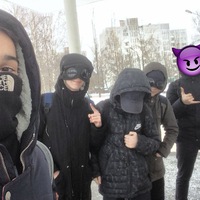
Помогите определить аспект к проблеме. Высказывание: "История-это правда которая становится ложью.
Миф-это ложь которая становится правдой." Проблема: взаимосвязь научного и ненаучного познания Аспект: ?? 0
0
 0
0
Ответы на вопрос
 Внимание! Ответы на вопросы дают живые люди. Они могут содержать ошибочную информацию, заблуждения, а также ответы могут быть сгенерированы нейросетями. Будьте внимательны. Если вы уверены, что ответ неверный, нажмите кнопку "Пожаловаться" под ответом.
Внимание! Ответы на вопросы дают живые люди. Они могут содержать ошибочную информацию, заблуждения, а также ответы могут быть сгенерированы нейросетями. Будьте внимательны. Если вы уверены, что ответ неверный, нажмите кнопку "Пожаловаться" под ответом.

 0
0
 0
0

Understanding the Statement
The statement "История - это правда, которая становится ложью. Миф - это ложь, которая становится правдой" reflects a perspective on the relationship between historical and mythical narratives. It suggests that over time, the distinction between truth and falsehood becomes blurred in both historical and mythical accounts.
Aspect: Interplay of Scientific and Non-Scientific Knowledge
The aspect of the statement relates to the interplay of scientific and non-scientific knowledge in the formation and interpretation of historical and mythical narratives. It raises questions about how these different forms of knowledge influence each other and shape our understanding of the past.
The interplay of scientific and non-scientific knowledge in historical and mythical narratives can be seen in the following ways:
1. Influence of Cultural and Social Contexts: The statement highlights how historical and mythical narratives are influenced by cultural and social contexts. This influence can shape the interpretation of events and the construction of narratives, blurring the lines between truth and falsehood.
2. Evolution of Interpretations: Over time, historical and mythical narratives can undergo reinterpretation and reevaluation. Scientific knowledge may contribute to new understandings of the past, while non-scientific knowledge, such as cultural beliefs and traditions, can also impact the evolution of these narratives.
3. Role of Evidence and Belief: The interplay between scientific and non-scientific knowledge raises questions about the role of evidence and belief in shaping historical and mythical narratives. Scientific knowledge often relies on empirical evidence, while non-scientific knowledge may be influenced by belief systems and cultural traditions.
4. Impact on Collective Memory: Both scientific and non-scientific knowledge contribute to the formation of collective memory. Historical and mythical narratives play a significant role in shaping how societies remember and interpret their past, influencing identity and cultural heritage.
5. Challenges in Historical Interpretation: The interplay of scientific and non-scientific knowledge presents challenges in historical interpretation, as it requires navigating between empirical evidence and cultural interpretations. This dynamic relationship can lead to complexities in understanding the past.
Conclusion
The statement "История - это правда, которая становится ложью. Миф - это ложь, которая становится правдой" prompts a deeper exploration of the interplay between scientific and non-scientific knowledge in the construction and interpretation of historical and mythical narratives. It invites consideration of how these different forms of knowledge interact and influence our understanding of the past.
 0
0
 0
0
Топ вопросов за вчера в категории Обществознание
Последние заданные вопросы в категории Обществознание






-
Математика
-
Литература
-
Алгебра
-
Русский язык
-
Геометрия
-
Английский язык
-
Химия
-
Физика
-
Биология
-
Другие предметы
-
История
-
Обществознание
-
Окружающий мир
-
География
-
Українська мова
-
Информатика
-
Українська література
-
Қазақ тiлi
-
Экономика
-
Музыка
-
Право
-
Беларуская мова
-
Французский язык
-
Немецкий язык
-
МХК
-
ОБЖ
-
Психология
-
Физкультура и спорт
-
Астрономия
-
Кыргыз тили
-
Оʻzbek tili








